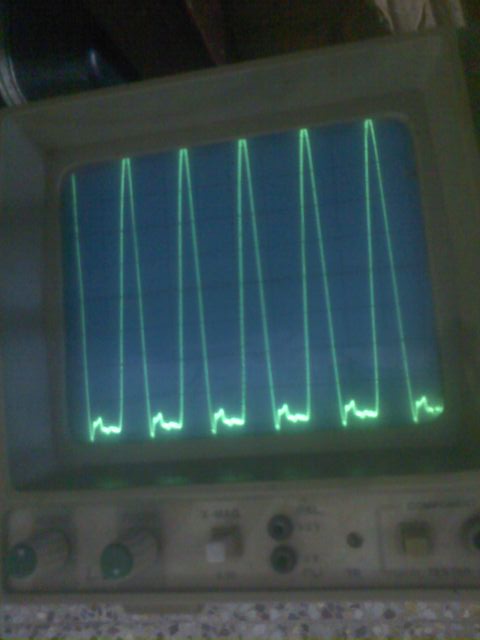Senthilkumar_rjpm
Full Member level 2








Resonating with the piezo would definitely help, since you don't need to drive with such a high voltage.
Is this "water fountain" test really reliable? Maybe you just don't get the same effects due to the higher frequency, even if everything is working properly?
In my opinion, it's plausible that a transformer with a huge leakage inductance, that apparently works at 1 MHz must not necessarily be good for 3 MHz as well. I would however expect, that the generator is designed based on nominal or empirically determined transducer and other component parameters.
Regarding fountain test, it would be interesting to know the related output power level. I'm not sure if similar safety rules exist in India, but in Europe or the U.S., a medical ultrasonic source would undergo strict power level tests and the design has to gurantee, that the power level can't unintentionally increase due to technical faults.
First of all is the current through your PA increasing when you apply the 3MHz?. The 1:5 transformer might not be passing much (any?) 3MHz. I would make this a resonant circuit with the input capacity of your PA transistors, also the 2k2 series resistor would have a much more serious effect due to the input capacitance of the transistor. I would be very careful of the choice of ferrite for the output transformer, again I personally would make it air cored. You are building an amateur transmitter, try to get hold of the AARL handbook, this would help you loads (AARL = American Amateur Radio League). The closest amateur band is 3.5 MHz!!!
Frank
I suspect the "sharpness" of your "fountain" relates to the driver
waveform's match to the mechanical resonance of the piezo head.
Height may have to do with delivered power. Do you know what
conclusion to draw from shape attributes? I.e. do you have a
voltage problem or are you (say) running at 3.0MHz when the head
wants 3.2MHz?
Your transducer is like a capacitor with a large loss - this appears as a parallel resistor across it. Its the resistive bit that is actually doing the work. To tune out the capacitance just add series inductance untill the transducer appears resistive, or minimum impedance as you do this the current through your PA should rise. You can measure this by the vollt drop across your source resistor or the power supply consumption.
FWIW When I was involved with testing ultrasonic transducers, we had a home made set of balancing scales (made of brass!!)set in the testing tank and loaded with 50 grms. Applying the transducer head to the empty pan was meant to tip the scales the other way - bit more scientific then looking at water spouts.
Frank
Well to do it properly you should have some kind of network analyzer. I'm betting you don't have access to one, which makes your job difficult, but still doable. You'll just need a scope and a good sine wave generator.Thnk you dick..
Thanks chukey....
Can i know how to increase the PA current in this circuit? and as u told can i add indictance (means take a copper & wind it roundly without core?)... & how i know this capacitance load(transducer) is come to resistive? can i measure it?
Hi all...
I am developing 3mhz ultrasound tharepy for my company...Already i developed the same machine in 1 MHZ frequency... (its nothing but to amplify 1 mhz frquency to 180v & give it to piezo electric crystal, It vibrate 1mhz frequency & its used for some treatments...) here we check that vibrate with water... If that water fountain is peak that freq (.8Mhz to 1.2Mhz) is typical for that crystal...
Hi Sir,
I am also trying to interface my 1 MHz ultrasonic transducer using your amplification circuit. I wanted to know whether we can use agilent frequency generator for getting the 1 MHz signal with maximum Vpp = 18.
Will this get amplified by sl108 transistor?
what is the voltage inputs of 1:5 transformer and the core of 22: 25?
How can I calculate it??
Kindly help me so that I can complete my final year project of underwater depth measurement.
Regards,
Rajeev
Coimbatore
We use cookies and similar technologies for the following purposes:
Do you accept cookies and these technologies?
We use cookies and similar technologies for the following purposes:
Do you accept cookies and these technologies?
